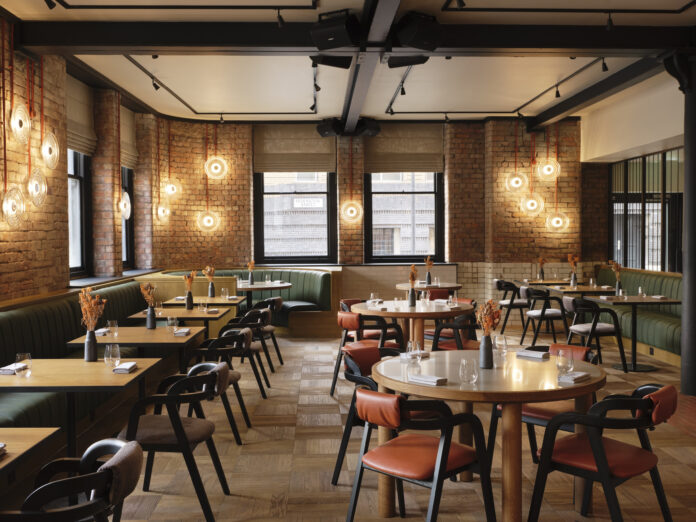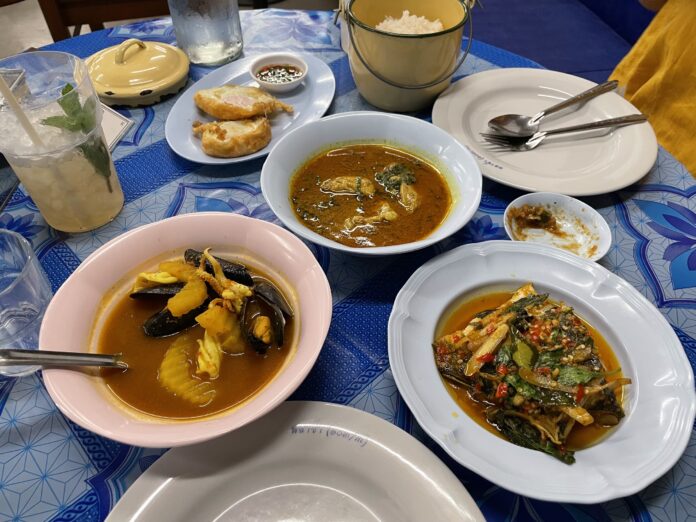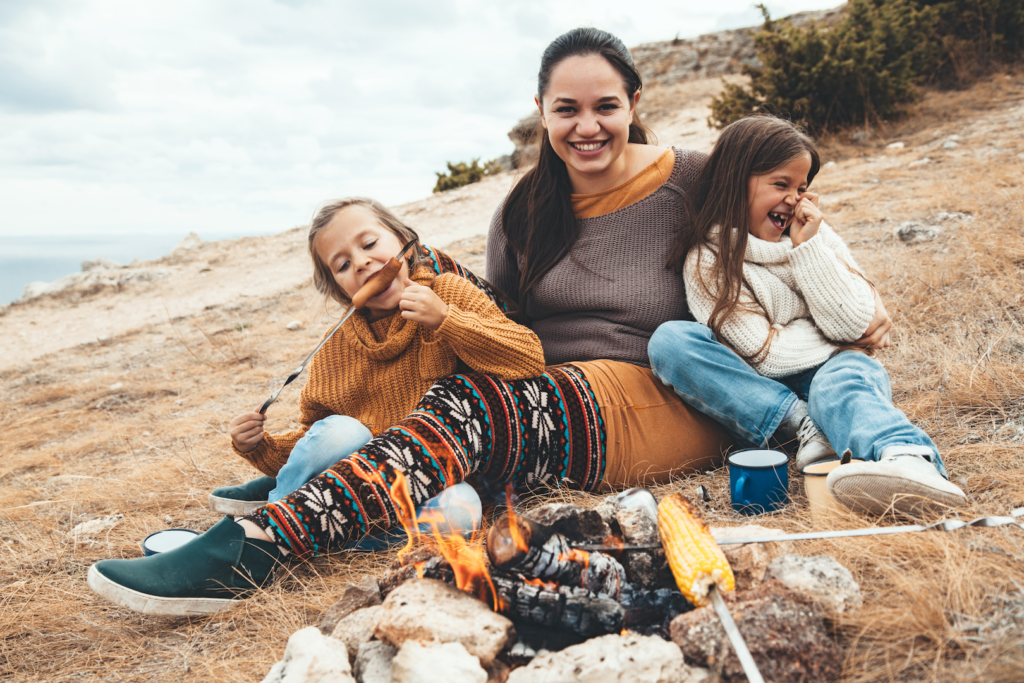
Ideal for those looking to make the most of Autumnal al fresco eating.
It’s the dream of so many who have been cooped up indoors for so long. To pitch up a tent somewhere wild and fashion a fire out of flint and bark. A makeshift trap is laid to catch a wild boar, some herbs are foraged for garnish, and the gang cook over an open flame all night, tearing off chunks of meat with their bare hands. Perhaps moonshine is involved…
Sorry, we got a bit carried away back there. But the point remains true; a meal enjoyed in the great outdoors, with even greater company, is one of life’s great pleasures. We think it carries a particular romanticism as the weather turns a little colder and we eke out the last days of outdoor living before Winter kicks in.
That said, cooking and eating al fresco can also be challenging, far from your comfort zone and the convenience of the domestic kitchen and dining table. Nevertheless, it’s that pragmatism, practicality and resourcefulness which makes cooking outdoors such a rewarding experience. Anyway, it’s a breeze if you follow these 6 practical tips for eating outdoors, IDEAL for those looking to make the most of Autumnal al fresco eating.
COOKING ESSENTIALS
While you could try and construct your own ‘rocket stove’ from a log, if you ask us (wait, you have asked us, that’s why you’re here), it’s more hassle to bring all the requisite tools with you. Better, then, to pack some outdoor kitchen essentials with you.
A compact and lightweight single or dual camp stove burner is a must – even if you’re planning on cooking over a fire, it’s handy for boiling water. Don’t forget to bring extra fuel with you, too; propane and butane are both safe and non toxic, clean burning fuels.
Consider a portable mini barbeque if you want quintessential, smoky grill flavour on your food and in your hair. And when it comes to cookware for camping, choose something lightweight and easy to clean. We like using enamel pots and pans – they don’t break, retain heat really well and are easy to scrub clean after.
Be aware that flies and midges may be attracted to the storm you’re cooking up; bring a food cover in the form of a collapsible food net. You know, the ones which look a little like an umbrella.
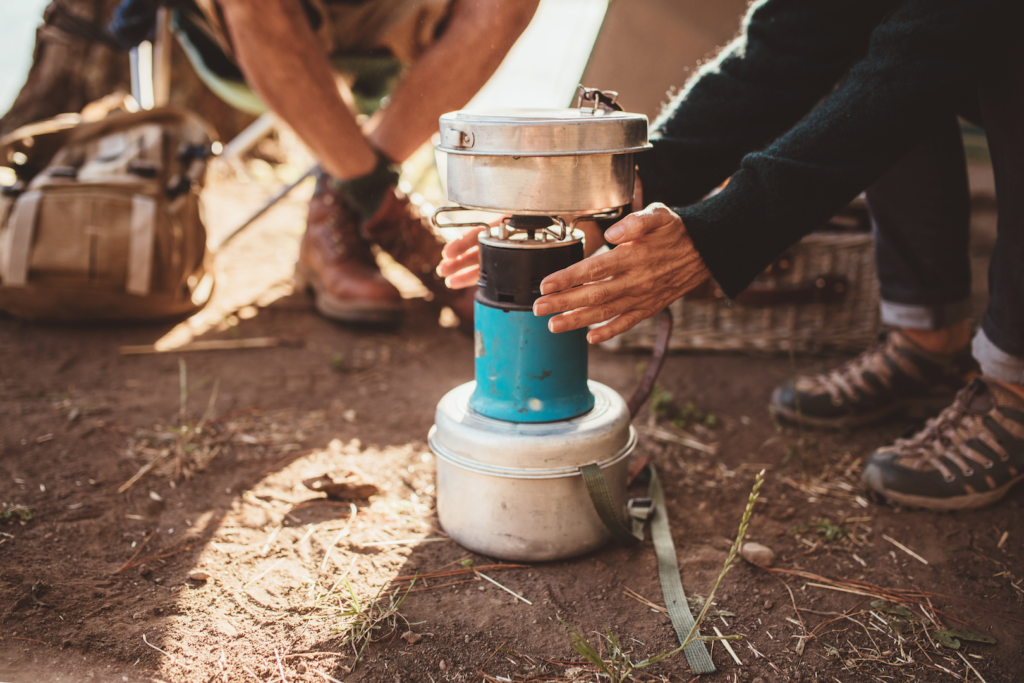
PLAN YOUR MEALS
There are so many fantastic one pot wonders out there which are easy to prep, assemble, cook and serve with only a portable gas stove or campfire for fuel. Of course, the minimal use of utensils and pots is so welcome when you’re camping, since it saves hugely on the painful procedure of washing up in the dark afterwards.
As much as possible, you need to prepare the right amount of food that you ideally consume completely each meal. Leftovers lose a little relevance when you have nowhere safe to store them overnight. However, in cases where there is still some untouched food left, practice efficient storage to avoid wasting food, polluting the surroundings, and attracting unwanted attention from animals. Bring an airtight container to avoid entry of air and moisture, which causes food spoilage.
If you’re keen to delve deeper into budget meal planning, check out our article which discusses just that.
SAFETY FIRST
You don’t want to ruin your outdoor experience by camping on an upset stomach or cutting your outdoor adventure short because you got sick. One of the most common causes of illnesses from camping, hiking, or any outdoor activity is mishandled or improperly cooked food. Make it a point to wash your hands and the food before preparing them for cooking. Cook food to their proper temperatures, preferably 75°C or higher. Just because you’re cooking in the wild doesn’t mean you’re suddenly immune to getting a dicky tummy.
When keeping food cold or hot, keep in mind that temperatures between 4°C and 60°C are not safe and are prone to bacterial contamination and proliferation. If you want to keep your food cold, keep it below 4°C (fridge temperature) and if you want to keep your food hot, keep it above 60°C. You need to place your cold or hot food in an insulated container until ready to serve.
And, if you want to bring meat to cook for camping, be sure to store it in a chiller or ice pack, chilled below 4°C. You’ll have to cook the meat within the day to ensure that it is still safe to consume.
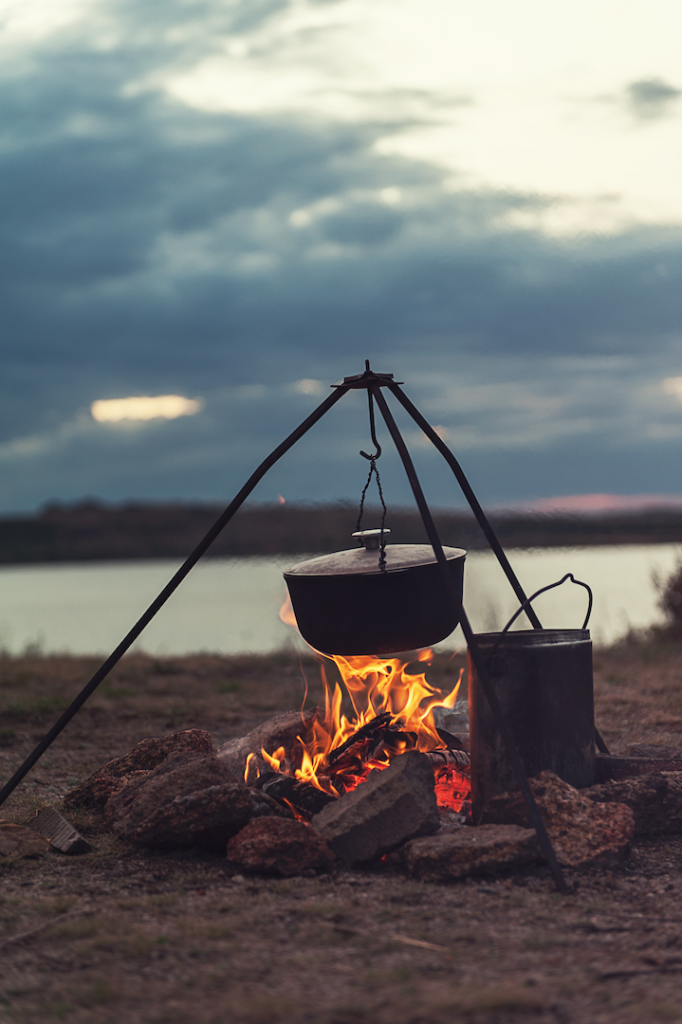
BRING DISINFECTANTS AND WASHING SOAP
Cleanliness is an essential practice when you live outdoors, especially when eating. Before you head out to camp, be sure that your cookware and utensils have been washed and cleaned. When you prepare and cook food outdoors, make sure to clean your hands, which is why bringing disinfectants and soap is essential. Also, you’ll need to consider how your cleaning affects nature, so choose disinfectants or soaps that have natural ingredients or those that are not harmful to the environment. A bottle of hand sanitiser (ubiquitous these days) is a useful stop-gap, too, for a quick going-over of your hands, though it doesn’t beat a thorough wash with water.
CONSIDER YOUR WATER SOURCE
While drinking water is a must-have item to bring for camping, you’ll need water for other purposes other than drinking and hydration.
Prior to setting off, check that your campsite has available running water, like faucets, washing area, or outdoor toilets. If your chosen camp does not have ready access to water (or if you’re doing things properly wild), then choose a location that is near to a natural source of water like a river or a creek. You’ll need water for washing your food, utensils, equipment, and hand and body; do make sure you boil it thoroughly first if it’s come from a natural source, to purify it (to an extent). Be sure to bring a container for water and do your washing away from the source to avoid polluting it.
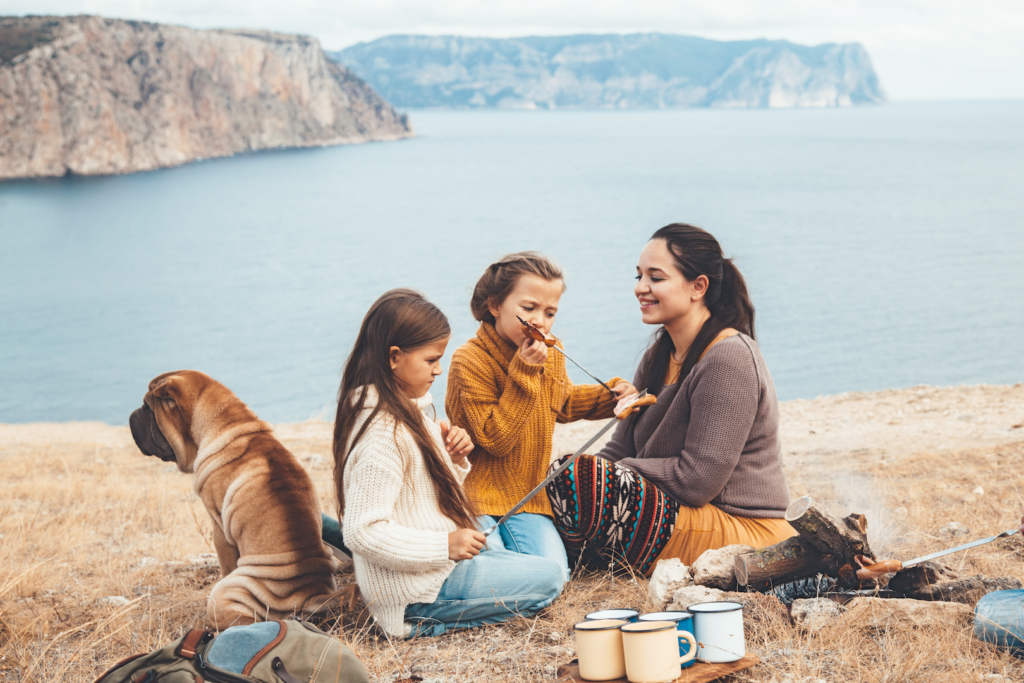
MAKE SURE TO PROPERLY DISPOSE OF YOUR FOOD WASTE
Always bring a secure receptacle or a durable waste bag where you can put peelings, food scraps, and containers for disposal. When using a waste bag, make sure to separate the biodegradable and recyclable materials. Food waste needs to be kept in air-tight containers or bags and placed 20-30 feet away from your camp, hung up high but within your reach to avoid encounters with animal scavengers and intruders. Be sure to dispose of your separated garbage in garbage bins outside the campsite to avoid being fined and, more importantly, to help preserve nature and aid in recycling efforts.
THE BOTTOM LINE
Cooking and dining al fresco is one of life’s great pleasures, in a life where, right now, pleasure is hard to come by. That doesn’t mean that you should approach your outdoor dining with reckless abandon; doing so would do damage to nature and your stomach. Instead, follow these simple, practical steps and pay respect to the great outdoors in the process.
Oh, and one more thing; can we join you next time?



